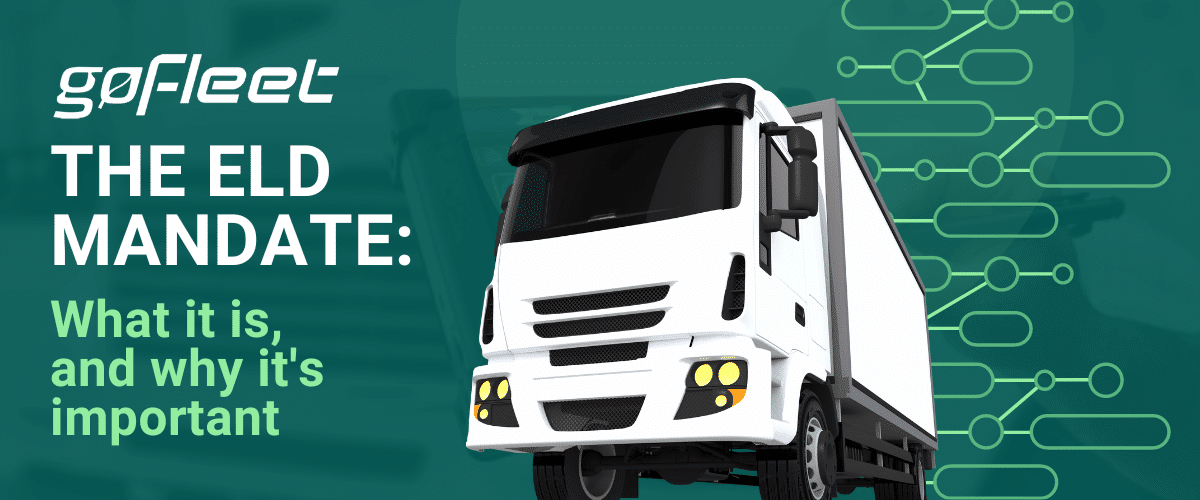The ELD Mandate has revolutionized fleet management by providing accurate and accessible data through electronic logging devices (ELDs). This article explores the significance of accurate data for fleet management and delves into the challenges and considerations associated with implementing the ELD Mandate. Specifically, it examines the costs associated with ELD implementation, the need for training and adaptation among drivers and fleet managers, and potential technical issues and system reliability.
I. Accurate and Accessible Data for Fleet Management:
The ELD Mandate ensures the availability of precise and easily accessible data that has numerous benefits for fleet management. This section highlights the importance of accurate data and its impact on improving operational efficiency and decision-making processes.
A. Enhanced Tracking and Monitoring:
ELDs provide real-time data on vehicle locations, hours of service, and driving behaviors. This subsection discusses how accurate data enables fleet managers to track and monitor their assets effectively, leading to optimized route planning, improved asset utilization, and enhanced overall fleet performance.
B. Data-Driven Decision Making:
Accurate data from ELDs empowers fleet managers to make informed decisions based on comprehensive insights. This subsection explores how data analysis and reporting tools derived from ELD data facilitate strategic decision-making processes related to driver performance, compliance management, maintenance scheduling, and operational optimization.
C. Improved Compliance and Safety:
With ELDs, fleet managers can ensure compliance with hours of service regulations, reducing the risk of violations and penalties. Additionally, accurate data helps identify patterns of driver fatigue, enabling proactive measures to enhance safety on the roads.
II. Challenges and Considerations of the ELD Mandate:
While the implementation of the ELD Mandate brings significant benefits, it also presents challenges and considerations for trucking companies. This section addresses key factors that require attention during the ELD implementation process.
A. Costs Associated with ELD Implementation:
ELD implementation involves upfront costs, such as purchasing and installing ELD devices, as well as ongoing expenses related to data plans, software updates, and maintenance. This subsection discusses the cost considerations and strategies for managing the financial impact of ELD implementation.
B. Training and Adaptation of the ELD Mandate for Drivers and Fleet Managers:
Transitioning to ELDs requires training and adaptation for both drivers and fleet managers. This subsection explores the importance of comprehensive training programs to ensure a smooth adoption process, address potential resistance, and maximize the benefits of ELD technology.
C. Potential Technical Issues and System Reliability:
As with any technology, there may be technical issues or concerns regarding the reliability of ELD systems. This subsection discusses potential challenges, such as connectivity issues, device malfunctions, and data accuracy, and explores strategies for mitigating risks and maintaining system reliability.
D. Privacy Concerns and Data Security:
The implementation of ELDs raises privacy concerns and highlights the importance of data security. This subsection explores the potential privacy implications of collecting and storing driver data, as well as the measures that should be taken to ensure data protection, compliance with regulations, and safeguarding sensitive information.
The ELD Mandate brings accurate and accessible data to the forefront of fleet management, enabling informed decision making and enhancing operational efficiency. However, it is essential to address the challenges and considerations associated with ELD implementation, including costs, training, technical issues, and privacy concerns. By carefully managing these aspects, trucking companies can successfully navigate the ELD Mandate and leverage its benefits to optimize fleet management and drive overall industry performance while ensuring data security and privacy compliance.
Mastering ELD Compliance and Implementation: Tips for Success
Successfully implementing the Electronic Logging Device (ELD) Mandate requires careful consideration and planning. This article provides essential tips and strategies to ensure ELD compliance and effective implementation. It covers key areas such as selecting the right ELD provider, driver and staff training, establishing robust data management processes, and maintaining ELD systems through regular maintenance and updates.
I. Selecting the Right ELD Provider:
Choosing the appropriate ELD provider is crucial for seamless compliance and optimal functionality. This section outlines considerations for selecting the right ELD provider, including evaluating their reputation, compliance certifications, features and functionalities, integration capabilities, customer support, and cost-effectiveness. It emphasizes the importance of partnering with a reliable and reputable provider to ensure a smooth and successful ELD implementation.
II. Ensuring Driver and Staff Training on ELD Usage:
Proper training is essential for drivers and staff to effectively use ELDs and understand their functionalities. This section discusses the significance of comprehensive training programs and offers tips for conducting training sessions. It covers aspects such as explaining ELD regulations and compliance requirements, demonstrating device usage, addressing common challenges, and emphasizing the importance of accurate data entry and record-keeping.
III. Establishing Effective Data Management and Record-Keeping Processes:
Efficient data management and record-keeping processes are vital for ELD compliance and effective fleet management. This section provides tips for establishing robust data management and record-keeping processes, including the importance of accurate data entry, regular data reviews, and proper storage and retention of electronic logs. It also emphasizes the need for backup and contingency plans to ensure data integrity and accessibility.
IV. Regular Maintenance and Updates for ELD Systems:
To ensure optimal performance and compliance, ELD systems require regular maintenance and updates. This section highlights the significance of maintaining ELD systems, including conducting routine checks, addressing hardware and software issues promptly, and staying up-to-date with firmware and software updates. It emphasizes the need for regular communication with the ELD provider for technical support and guidance.
Successfully navigating the ELD Mandate and achieving compliance requires careful attention to various aspects of implementation. By following these tips for ELD compliance and implementation, such as selecting the right ELD provider, providing comprehensive training, establishing effective data management processes, and ensuring regular maintenance and updates, trucking companies can streamline operations, enhance compliance, and maximize the benefits of ELD technology. With a well-executed implementation strategy, companies can adapt to the digital era of fleet management and unlock the potential for improved efficiency, accurate record-keeping, and enhanced regulatory compliance.
Conclusion:
The ELD Mandate has brought about significant changes to the trucking industry in both Canada and the United States. Compliance with the mandate is crucial for reaping the benefits it offers, including improved safety, efficiency, and regulatory compliance. By embracing ELD technology and staying informed about evolving regulations and advancements in the field, trucking companies can position themselves for success in a digitalized and data-driven industry landscape.










